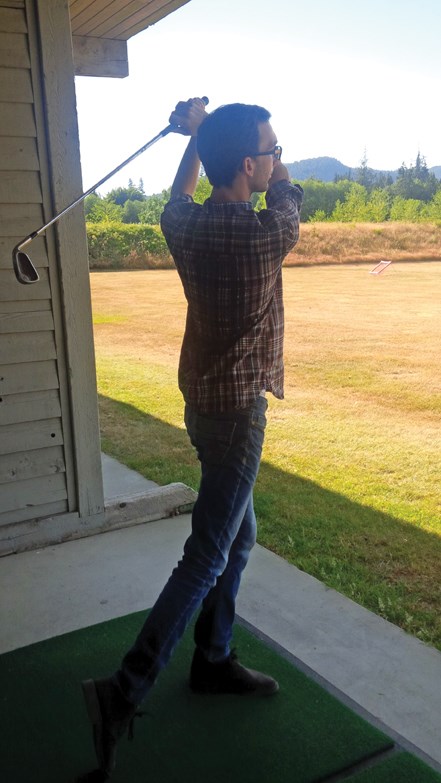The Green Golfer is an ongoing column this summer featuring golf lessons from Past PGA of Canada president Barrie McWha and a journalist who has never golfed in his life.
This week we saw some improvements to my game; last week I did an exactly mediocre job and didn’t see the need to write a column about it.
We’ve been working on getting my golf swing into one fluid motion. So far I can do all of the smaller motions well enough, just not all at the same time.
Barrie has advised me to take two or three practice swings before trying to hit the ball.
This week Barrie introduced a new part of the swing into our lessons. It’s a kind of folding of the forearms and U-shaped flexion of the wrists.
Basically, when you are at the full extent of your back swing, the wrist of your top hand (my right) is flexed so that the thumb is at about 90 degrees. As the swing comes down, the wrist straightens out until it makes connection with the ball.
At this point both wrists are flat all the way down the top of the forearm, from elbow socket to thumb nail.
After you connect with the ball, the same thing happens to your other arm, but in reverse.
Through the entire motion, your shoulders, elbows and wrists are all rotating somewhat, so that you go from left forearm facing down and right forearm facing up, to left forearm up and right forearm down.
If you do it right, you have perfect accuracy with the ball. I did it sort of right a couple times.
When I made a real connection with the ball, it felt like almost nothing at all. When I missed by a quarter of an inch, I could feel the jarring vibrations all the way up the club into my arms.
Barrie told me to call it a day after I made one particularly good connection. It was a hot day and even after an hour on the driving range, I was sweating through my clothes.
“It’s important not to overdo it,” Barrie said. “After a certain point you’re not improving yourself, you’re just getting frustrated.”


